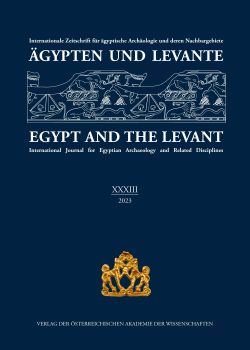
Ägypten und Levante 33, pp. 145-158, 2024/02/28
Internationale Zeitschrift für ägyptische Archäologie und deren Nachbargebiete
International Journal for Egyptian Archaeology and Related Disciplines
Wadi El-Nasib is one of the most important Egyptian mining sites situated in southwestern Sinai. In October 2021, the first excavation mission at the site was conducted by an Egyptian team. The mission conducted an archaeological survey in the valley followed by excavations in three areas. The excavation in Area 1 revealed copper smelting workshops. Additionally, the mission discovered a malachite mine in Area 3. In Area 2, the mission unearthed a huge stone building measuring approximately 225 square meters. This structure is believed to have served as the headquarters for mining expeditions in Sinai during the Old and Middle Kingdoms. In the New Kingdom, the building was used as a workshop for smelting copper and refining turquoise. Internal modifications included the addition of walls and a northern entrance. Notable discoveries include copper smelting furnaces and processing areas. Four copper cakes, each weighing between 1200 to 1300 grams, and quantity of about 10 kg of crumbled copper were also found.
Keywords: Sinai, Wadi el-Nasib, Archaeometallurgy, copper, New Kingdom